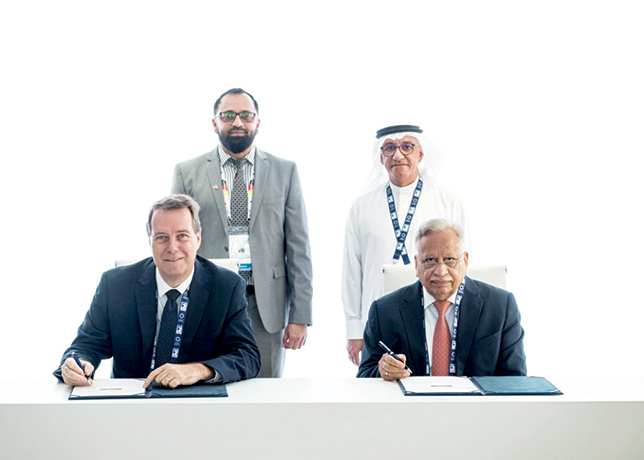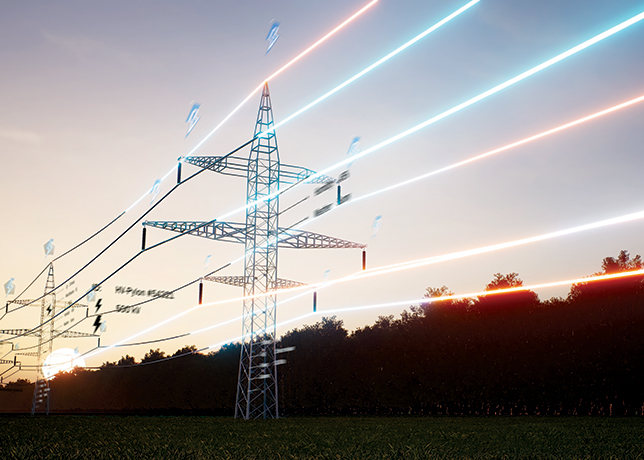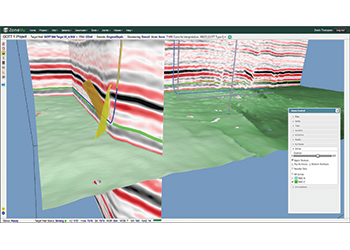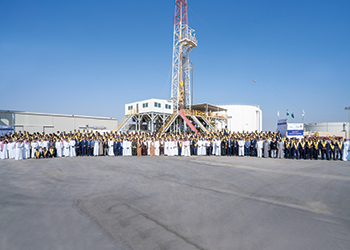
 A CO2 pipeline exiting the receiving station
A CO2 pipeline exiting the receiving station
Distributed Fibre Optic Sensing systems by AP Sensing offer improved performance and are installed on Aramco’s crude oil pipelines, Dr Alex De Joode, Head of AP Sensing Pipelines and Terminals Business Unit, tells OGN
Saudi Aramco demonstrates its continued leadership with the adoption of new technologies for pipeline monitoring.
As part of a long-term commitment to protect the environment and maintain technological excellence, Aramco has successfully concluded the evaluation and approval of Distributed Fibre Optic Sensing (DFOS) technology for pipeline leak detection.
Pipeline leak detection systems using DFOS are already installed in Aramco pipelines and other pipelines in the Kingdom of Saudi Arabia due to the improved performance provided by this new pipeline leak detection method.
DFOS technology is able to transform a standard fibre optic telecom cable into a sensing cable capable of detecting vibrations, temperature changes and acoustic events.
In the case of pipelines, DFOS technology is used to measure temperature in heated pipelines and detect leaks using temperature and/or acoustic monitoring. DFOS is also used to protect pipelines from accidents caused by third party interference (TPI) such as from mechanical diggers and other construction operations.
 |
An Aramco sulphur pipeline |
With DFOS, the fibre optic (FO) cable becomes the sensing element, similar to an array of temperature meters or microphones. The FO cable can be split into zones as small as one to five meters, providing a very significant location improvement when compared with traditional technologies.
Distributed Acoustic Sensing (DAS) and Distributed Temperature Sensing (DTS) are DFOS technologies successfully used in the KSA for monitoring other long and critical infrastructures such as water pipelines, downhole applications, power cables, tunnels and metro lines.
The DAS or DTS uses a laser source, which is installed at one end of the FO cable to inject laser pulses. As the pulse of light travels inside the fibre, backscattered light returns to the sensor carrying information from distances up to 70 km. The monitored distance without any intermediary interrogator can be up to 140 km when two interrogators are used on each side of the cable.
Pipeline operators are adopting DAS and DTS as the preferred pipeline leak detection technology for new projects, either stand-alone, or in conjunction with other technologies.
Pipeline leak detection using either DTS or DAS has many benefits for pipeline operators as compared to traditional pipeline leak detection methods. These include:
• Leak location within metres.
• Insensitivity to hydraulic transients.
• No loss of performance and suitable to multiphase pipelines.
• Not dependent on field instrument availability or calibration drift.
• Higher sensitivity.
The additional functionalities of DTS or DAS include:
• Real-time scraper tracking.
• TPI monitoring of both onshore and offshore pipelines.
• Flow assurance monitoring (hydrate formation, waxing formation, liquid accumulation).
• Ground and/or fluid temperature monitoring.
AP Sensing’s presence in the KSA continues to grow. In addition to Saudi Aramco pipelines, the company’s technology is used for power cable monitoring by the Saudi Electricity Company (SEC), fire detection in tunnels and metro lines in Riyadh, and water pipeline TPI monitoring and leak detection by the Saline Water Conversion Corporation (SWCC).
AP Sensing has also conducted demonstrations in the Kingdom for other applications including subsea power cable fault monitoring.
AP Sensing is a German manufacturer with a regional office in Bahrain working with local partners in the Kingdom to deliver and support projects locally. Installations in the region include CO2, natural gas and crude oil pipelines with Kuwait Oil Company (KOC) and Abu Dhabi National Oil Company (Adnoc).
Using a proprietary polarised laser technology called 2P Squared, AP Sensing systems enable higher fidelity over longer distances using a safe Laser Class 1. The company’s equipment and software are made to surpass the highest quality and reliability standards.
AP Sensing technology is monitoring several hundred critical infrastructure projects around the world. Additionally, the company is expanding the application of DAS technology to monitor fences, borders, trains and railroads, and subsea applications.
Utilising a dedicated team in the UK, AP Sensing incorporates the latest developments in machine learning and data analysis to the DAS/DTS software. Continuous hardware and software development are augmented by extensive field experience over several hundred projects and data from full-scale trials.
AP Sensing DAS and DTS technology can bring significant improvements and advantages to pipeline monitoring systems, working singularly, in a combination of both DAS and DTS, or in conjunction with traditional pipeline leak and intruder detection systems.
Additional information on DAS or DTS can be found at www.apsensing.com or by email at info@apsensing.com.





































































































.jpg)













